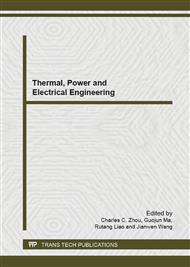p.250
p.254
p.258
p.265
p.270
p.276
p.280
p.286
p.291
Research on Aerodynamic Characteristics of Air-Cooled Turbine Blade with Conjugate Heat Transfer Method
Abstract:
In order to improve the performance of aero engines, trying to increase the turbine inlet temperature is an important way. But the turbine inlet temperature of modern aero engines can be more than 2000 K, which is far more than what the materials can bear. So advanced cooling technologies should be introduced to solve this problem. Using the conjugate heat transfer method, this paper researched the aerodynamic characteristics of a certain turbine blade with complex cooling structures. Some conclusions can be drawn: the velocity of the air flow and different distributions of coolant flow for turbine blade with multiple cooling air inlets have great influence on the cooling effect; the cooling effect decreases as the temperature ratio decreases; with the same mass cold gas, the less film cooling holes, the worse cooling effect; therefore, a reasonable air flow distribution plays an important role in obtaining good cooling effect.
Info:
Periodical:
Pages:
270-275
Citation:
Online since:
August 2013
Authors:
Keywords:
Price:
Сopyright:
© 2013 Trans Tech Publications Ltd. All Rights Reserved
Share:
Citation:


